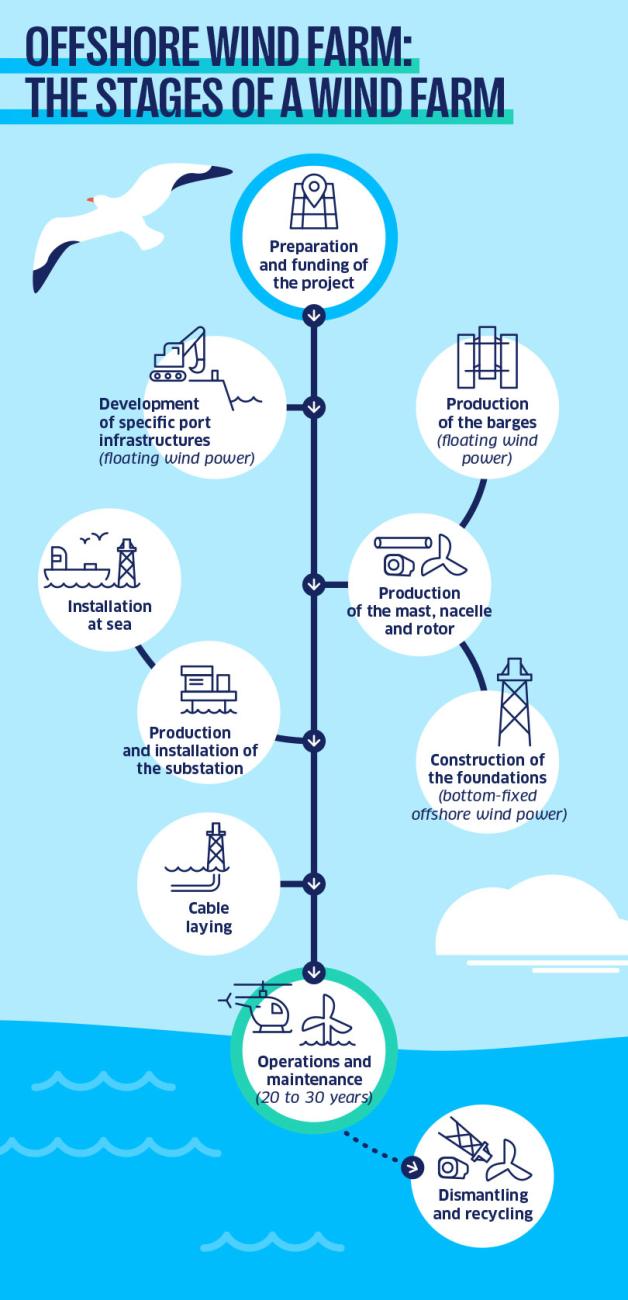
Located between ten and several dozen kilometres off the coast, offshore wind turbines can be either bottom-fixed – meaning they have foundations on the seabed, at maximum depths of 50 to 60 metres – or floating. Floating turbines are installed on a platform that floats on the surface of the water and is attached to the seabed by mooring lines, allowing them to be installed in very deep water. At present, bottom-fixed turbines are much more common, but floating wind turbines are expected to really take off over the next decade. Like their onshore “cousins”, offshore wind turbines consist of a mast equipped with a rotor, usually with three blades. They convert the kinetic energy of the wind into electrical energy, which is sent to a substation at sea and then, via underwater cables, to an electrical substation on land, in turn connected to the electricity grid.

